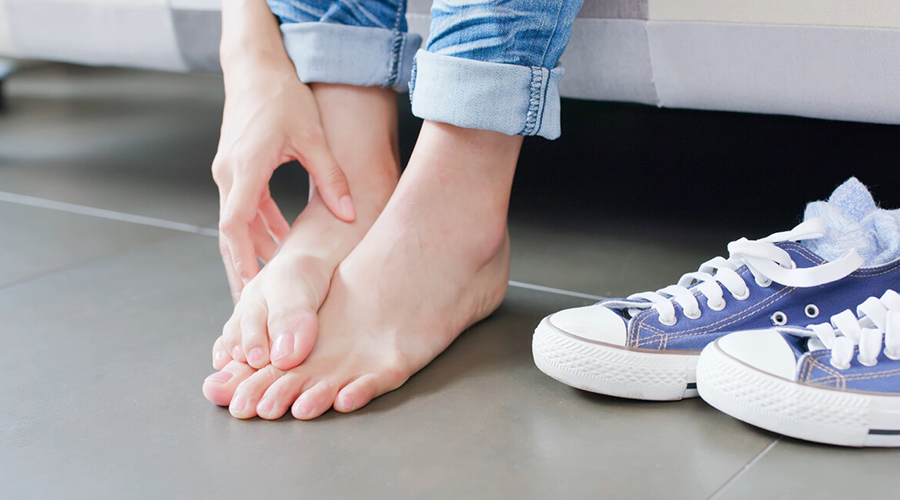
Athlete’s foot can be unpleasant, but what can we do if we don’t have the right cream at hand. You should know that it is possible to treat athlete’s foot at home. Certain herbs, oils and natural remedies can help. These will be discussed in this article.
Treatment of athlete’s foot at home, with simple methods!
Unfortunately, we are talking about a very common disease when it comes to athlete’s foot. Many people don’t even know its symptoms, and that’s why it’s not treated. Athlete’s foot can appear on the soles of the feet, but also between the toes. Roughly 10-20% of the population used to be affected by this problem. The most common causative agent is the fungus Trichophyton rubrum.
We will now introduce you to several home remedies and substances you can use against athlete’s foot.
The treatment of athlete’s foot can also be suitable at home, as it is not always necessary to consult a doctor immediately. Untreated athlete’s foot can spread to the nails, which can be much more stubborn, since it can only be removed from the nail by growing it off. And this can be up to 7-8 months or 1 year, as the nail grows very slowly. At an older age, nail growth is even slower. So it is not worth waiting until it spreads to the nails.
Face the fungus with vinegar!
Of course, it is also possible to treat skin fungus at home with vinegar. Vinegar is very effective for athlete’s foot and is good for many other things, such as sunburned skin. Plain apple cider vinegar also serves the purpose. Applying vinegar to athlete’s foot is done as follows: mix it with water and soak your feet in the resulting liquid for 15 minutes twice a day. Treating athlete’s foot at home with the help of vinegar is used because vinegar soothes itching and has a cooling effect. When we are done soaking, wipe our feet thoroughly dry. If you don’t have time for a foot bath, you can also wipe the fungal skin surface with a cotton swab.
Important information: If you touch a fungal toe, always wash your hands thoroughly to avoid transferring the infection to other parts of the body.

Baking soda also works against fungus!
Baking soda is also the best against athlete’s foot. The recipe is simple: before going to sleep, sprinkle baking soda in your shoes. It dries and prevents the appearance of fungi. So it is also possible to treat athlete’s foot with baking soda. Be sure to try this method yourself! Baking soda can also be effective against nail fungus, so it is worth trying in this case as well.

Tea tree oil!
It is also very effective against athlete’s foot. Fungus, bacteria and virus killer. in the case of a fungal infection, add 40 drops of tea tree oil to 100 ml of jojoba oil and treat the fungal skin surface with this for several weeks.

Lavender
Lavender oil has similar effects to tea tree oil. Thanks to this, lavender oil can also be used against skin and nail fungus. Lavender basically has a calming and antispasmodic effect. However, it can also deal with stubborn infections and drug-resistant fungal species.
It is also possible to treat skin fungus at home with turmeric, which has an excellent anti-inflammatory effect. Its main active ingredient is curcumin, which has an antimicrobial effect. You can also consider coconut oil. The fatty acids in it destroy the cells of the fungi and thus help to overcome the infection. Recommended for mild to moderate fungal infections.

What is the best anti-fungal cream?
Unfortunately, this cannot be stated so simply and clearly. We are different, and there are also different fungal infections, which may differ in their progress. In most cases, if we do not neglect them, they can be treated easily, however, in an advanced, neglected state, medical intervention may also be necessary!
How long does athlete’s foot go away?
Treatment time for athlete’s foot can vary, depending on how severe the infection is and how it is treated. In general, however, the treatment can last up to a few weeks or even a few months. The effectiveness of the treatment can also be influenced by the type of athlete’s foot that causes the infection, as well as how well it is possible to avoid further infections during the treatment.
